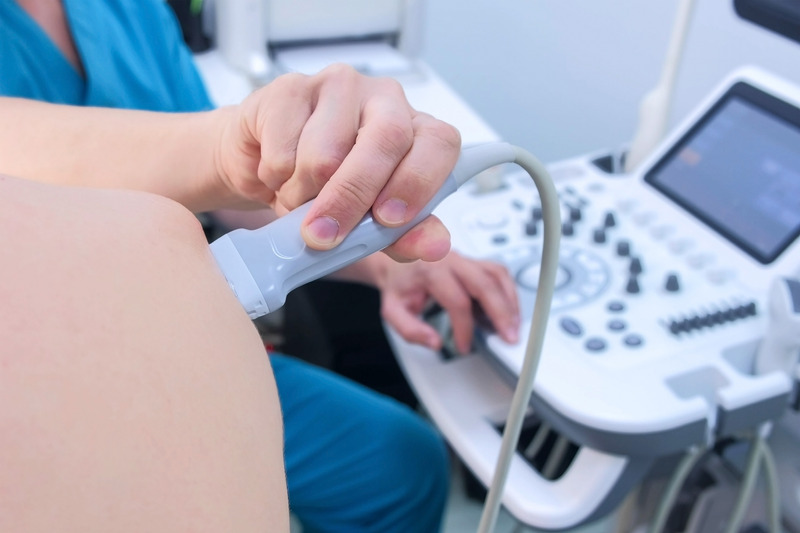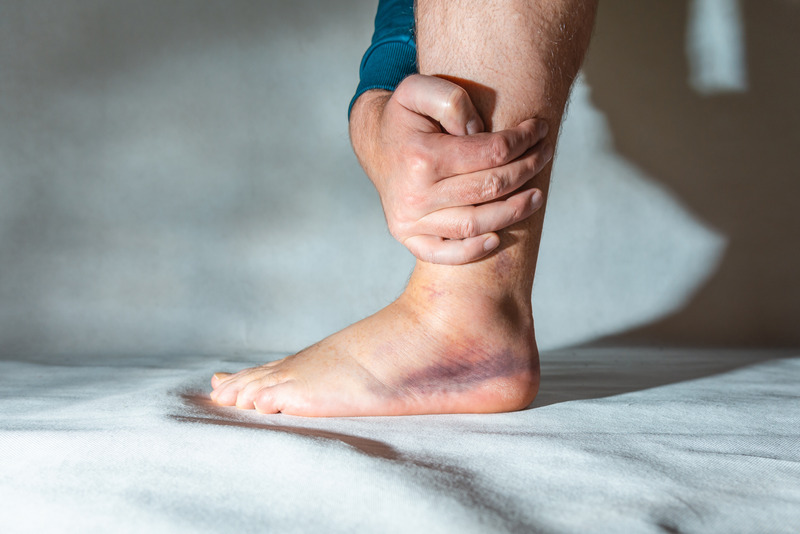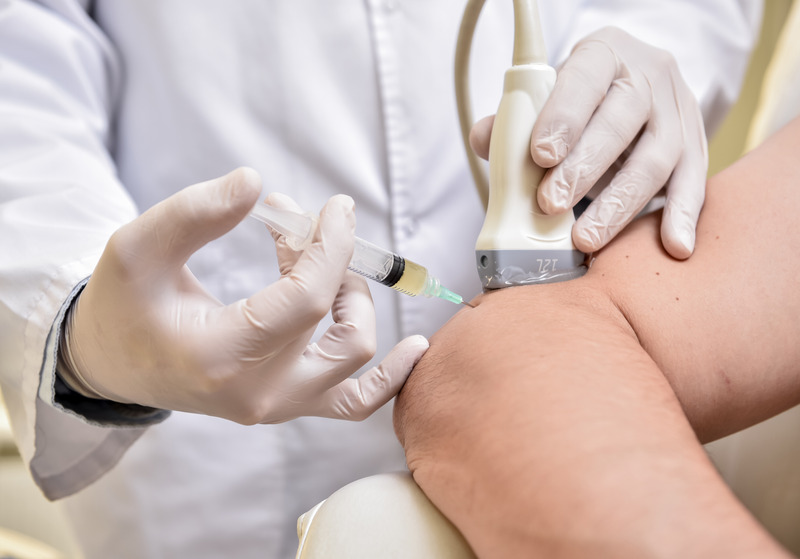Joint Aspiration (Arthrocentesis)
Joint puncture, also known as arthrocentesis, is a medical procedure that involves inserting a needle into a joint to remove fluid or administer medication. This procedure is commonly used in physical medicine to diagnose and treat various joint conditions, including inflammatory, traumatic, and postoperative joint issues.
In some cases, simply removing excess fluid can relieve discomfort—such as reducing swelling and, in many instances, eliminating pain in inflamed joints. When the diagnosis is not entirely clear, fluid samples may be collected for further diagnostic evaluation.
By delivering medication directly into the joint, a therapeutic effect can be achieved that would not be possible through other methods—and often within a relatively short period of time. In certain conditions, this procedure may need to be repeated multiple times to achieve the desired therapeutic outcome.

When Is Joint Aspiration Performed and Why?
Joints are a vital part of the musculoskeletal system, serving as the connection points between bones. Cartilage at the ends of the bones allows for smooth movement and gliding, while synovial fluid lubricates the joints and cartilage, reducing friction during motion.
In many traumatic, degenerative, and inflammatory joint conditions, there is either increased production of synovial fluid or reduced absorption, leading to joint swelling.
The accumulation of fluid in the joint increases pressure, causing pain and limiting mobility (impaired joint function). In some cases, bleeding may occur, resulting in the presence of blood within the joint—a condition known as hemarthrosis.
The indication for joint aspiration is determined by a specialist physician following a clinical examination.
Common Conditions That Cause Excess Fluid in the Joint


What Does the Procedure Look Like?
Joint aspiration can be performed under ultrasound guidance, allowing the physician to monitor the needle path and the entire fluid evacuation process in real time on the screen.
The patient is positioned either sitting or lying down in a way that is comfortable and provides the doctor with easy access to the joint. A local anesthetic is administered to minimize pain and discomfort.
Once the area is numb, the doctor disinfects the skin and inserts a needle into the affected joint. By pulling back the plunger of the syringe, the fluid is aspirated. If needed, the syringe is then replaced with one containing medication, which is injected directly into the joint. A bandage is applied to the puncture site afterward. If necessary, the aspirated fluid may be sent for further laboratory analysis.
The procedure may cause some discomfort, but it is usually brief and well-tolerated. Since fluid can accumulate again over time, the procedure may need to be repeated multiple times, depending on the condition being treated.
Contraindications and Complications of Joint Aspiration
Contraindications for joint aspiration include skin injuries, skin conditions, or infections at the intended puncture site, as well as blood clotting disorders.
Serious complications are rare. In some cases, patients may experience minor bleeding or mild allergic reactions such as rash, itching, or swelling after medication is administered.
Is Pain Expected After Joint Aspiration?
In some patients, a mild local discomfort may occur, but the pain typically subsides quickly. After the effect of the local anesthetic wears off, you may experience slight pain that usually resolves within a few hours. In certain cases, applying ice to the area after the procedure is recommended to reduce swelling and promote faster recovery.
What to Expect and Do After Joint Aspiration?
After joint aspiration, the patient should rest for the next 24 hours to relieve pressure on the joint and allow the medication to take full effect. For the following 2 to 3 days, it is recommended to avoid heavy physical activity and putting stress on the joint.
Personalized Treatment Plans for Faster Recovery
Each patient receives a personalized treatment plan focused on restoring function and reducing pain. The approach targets the root cause of the problem—whether it’s an injury, a chronic condition, or post-surgical rehabilitation. Based on your diagnosis, condition, and goals, we create a tailored plan that may include manual therapy, therapeutic exercises, physical modalities, and specialized treatments.
Our goal is to help you reach maximum results in the shortest possible time, using the most effective and comfortable approach. We’re proud to say that, thanks to our extensive experience, full dedication, and state-of-the-art technology at Dr. Rodić’s clinic, we are able to avoid surgery in up to 80% of cases—while achieving the same or even better outcomes. At the same time, we reduce the need for medication and help you restore your quality of life quickly and without invasive procedures. In fact, our patients tend to recover up to 30% faster.
In therapy, we use a variety of treatments—therapeutic modalities that are an essential part of comprehensive physiatric care.
Our Patients’ Experiences Are Our Best Recommendation
Relief Begins With the Right Diagnosis
Early and accurate detection of the underlying cause is the first step toward effective treatment and a faster recovery.
